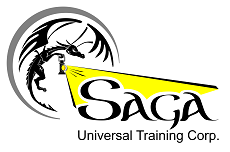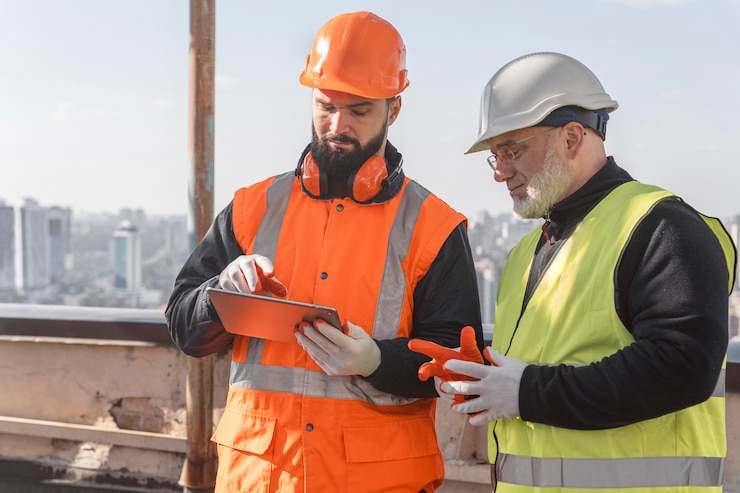While you took First Aid Training in Alberta, Fall Protection, or Confined Space Training course, you learned you need a rescue plan in case something happens to you or a co-worker at work.
The following day you got to work and wondered if you needed a rescue plan and how in-depth it must be.
The purpose of this Blog is to provide you with some answers.
A Reminder Why We Need a Rescue Plan.
January 11, 2003 – Three barge workers died, and three other men, including a rescue worker, were seriously injured when toxic fumes overcame them as they worked in the barge’s hold.
(Source: Global Mail).
These fatalities occurred 19 Years ago. Yet every year, we still see fatalities of Rescuers trying to rescue workers. Due to a lack of Hazard Identification, Rescue Plan, and Training, the rescue resulted in the worker or the rescuer suffering severe injuries or death.
Emergency Response/Rescue Plan
Provincial and Territorial OHS legislation requires the employer to have an Emergency Response Plan and/or Rescue Plan for medical emergencies and workers working at height or in a Confined Space, and training for Alberta employees.
In Alberta, in the OHS Code and in BC, under the Worksafe Regulation are references that employers require an Emergency Response Plan in the sections for Confined Space, Emergency Preparedness and Fall Protection.
The reasons for these requirements come from the studies of workplace fatalities that indicate that fatalities could have been avoided with a proper Rescue plan and Rescuer training. Below are some of the results of those studies.
NIOSH Investigations on Confined Space Incidents:
- 85% of the time, a supervisor was present.
- 29% of the dead were supervisors
- 31% had written the Confined Space Entry procedure.
- 0% used the written procedure
- 15% had Confined Space Training.
- 0% had a rescue plan.
- 60% of “would-be” rescuers died.
- 95% were authorized by supervision.
- 0% of the spaces were TESTED prior to entry.
(Source: OH&S Magazine August 1, 2018.)
One of the findings from the ANSI/ASSP Z359 Fall Protection and Fall Restraint Committee Survey on Fall protection was:
- Rescue training may help reduce fall-related deaths. The odds of a fall being fatal were 76 percent lower for workers with self-rescue training, including Fall Protection Rescue Training.
(Source: CPWR Report, “Underlying Causes of Falls from Height,” August 2022.)
What are the answers? Think “Hockey” for your workplace Rescue Plan.
An Offensive line: Do you need to perform this job? What is your job plan? Do we have competent workers and equipment for the job?
A Defensive line: Do you have good supervision? What about verification that the work is getting completed safely
Goaltender: Like in hockey, there are times your team will let the hazard or the puck through. This is when a Rescue team with a plan can save someone’s life.
Emergency Rescue Plan: First Aid and Rescue Training
A rescue plan can be simple. A worker in an urban office suffers a medical emergency. You have to plan for First Aid, with Attendants on site that are certified with up to date First Aid Training, First Aid kit and call 911. Emergency and Medical Services (EMS) will be on the scene within 10 minutes.
In a remote location, the same worker will have to be transported from the worksite to the closest Hospital by someone on site. Do you have the personnel and equipment to transport this worker?
Now you understand that you must have a rescue plan even for a simple and short-duration job.
Here are questions to ask when you are building a rescue plan for a job:
- What are the risks of injuries?
- What are the hazards the rescuers could be exposed to?
- What is the rescue equipment the rescuers will need?
- How many rescuers are you required to perform the rescue?
- When was the last time the rescuers performed a drill for this type of rescue?
- Are the rescuers physically capable of performing the rescue?
- How would the rescuers bring the injured person from their work area to a ground ambulance?
- Is the Rescue team available? Do they know this work is occurring? Are they ready to respond?
- What means of communication will be used to summon the rescue team?
As a worker performing the task, you should ask the following questions before starting your task:
- What is the rescue plan?
- Is the rescue plan feasible for the area you will work?
- Who is on the rescue team? Are they available on site?
Note: Not all worksites have a rescue team. You may be expected to provide co-worker rescues on some sites. - Where is the rescue equipment? Is it in good condition? Is it designed for rescue?
- How to call for help when needed?
Using the Local Fire Department as a Rescue Team:
Often, a Rescue plan identifies their local Emergency and Medical Services as the rescue team for high-risk activities like Confined Space and Fall Protection. Most workplaces in urban areas will have access to EMS technical teams. They are limitations on what type of rescues a Fire Department can perform due to resources within the Fire department. This is why employers and workers should not rely simply on calling 911 as their rescue plan.
A quick example: A worker working at a height that falls in a fall protection harness. To ensure the best chance of survival, the worker must be rescued within 10 Minutes. If you calculate the time it will take to call the fire department, the fire department arriving on the scene and setting up can take 20 minutes. This is if they are not a higher priority call that came in and the traffic was light. A worker could be hanging for a while and sustain further injuries.
Confined Space and Fall Protection Training in Alberta and Other Safety Considerations
A worker can take basic rescue courses and equipment for Confined Spaces and Fall protection to be equipped with the knowledge to perform some rescues. Hiring a Technical Rescue Team for medium and high-risk confined spaces or working at height works best.
No one plans for an incident to occur when performing tasks; it does happen if things go sideways, and your life will depend on that rescue plan.
At Saga Universal Training, we can assist you with your Training needs, whether you are looking for Fall Protection, Confined Space Training, Rescue Training, or any due diligence for your workplace safety plan. Get in touch today at (780) 612-5159 or via email at info@sagatraining.ca.
References:
Alberta OHS Code: Confined Space Part 5 section 55, Part 7 section 55, Emergency Preparedness and Fall Protection Part 9 section 140.
Worksafe BC Regulation: Emergency Preparedness Part 4 section G4.13 (1), Confined Space Part 9 Section G9.41 and Fall protection Part 11 Section 11.3 and Confined Space Part 9 Section G9.39.

